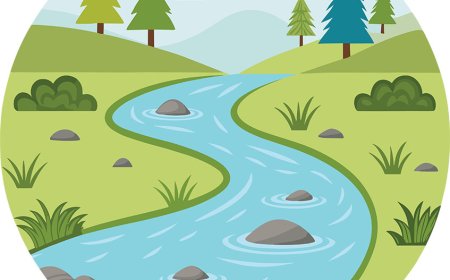Metamorphic Rocks for Students | Earth Science Guide
Learn about metamorphic rocks formed when existing rocks change under heat and pressure discover examples like marble slate and schist in Earth science
🌟 Introduction
Metamorphic rocks are "changed rocks." They start as igneous or sedimentary rocks but transform when exposed to heat, pressure, or chemical processes deep inside Earth. This process, called metamorphism, changes the minerals, texture, and appearance of the rock without melting it. Some metamorphic rocks develop layers or bands, while others become harder and more compact. Famous examples include marble, which forms from limestone, and slate, which forms from shale. Metamorphic rocks are important in construction, art, and geology, and they show how Earth's forces recycle and reshape rocks in the rock cycle.
🔍 What are Metamorphic Rocks?
Metamorphic rocks form when existing rocks change due to heat, pressure, or chemical processes, but do not fully melt.
Two main types of metamorphism:
-
Regional Metamorphism: Happens over large areas when tectonic plates collide, creating mountains.
-
Contact Metamorphism: Happens when hot magma changes surrounding rocks.
Examples:
-
Marble: Formed from limestone.
-
Slate: Formed from shale.
-
Schist and Gneiss: Rocks with visible mineral bands.
🌍 Why are Metamorphic Rocks Important?
-
Construction and Art: Marble is used in buildings and sculptures, slate in roofs and tiles.
-
Earth's Story: They show evidence of tectonic forces and mountain building.
-
Strength: Metamorphic rocks are often harder and more durable.
-
Resources: Some contain valuable minerals like garnet or graphite.
🧪 Everyday Examples
-
Marble countertops in kitchens come from metamorphosed limestone.
-
Slate tiles are used for floors, roofs, and chalkboards.
-
Quartzite, formed from sandstone, is used in glassmaking.
-
The Taj Mahal in India is built from white marble.
✨ Fun Facts
-
The word "metamorphic" means "to change form."
-
Diamonds form under extreme pressure and are considered metamorphic minerals.
-
Slate was once widely used for blackboards in schools.
-
Gneiss has beautiful wavy bands of minerals that make it decorative.
📌 Key Takeaways
-
Metamorphic rocks are formed from existing rocks that change under heat and pressure.
-
They can be foliated (layered) or non-foliated (non-layered).
-
Examples include marble, slate, schist, and gneiss.
-
They are valuable for construction, art, and understanding Earth's processes.
🐾 Kid-Friendly Summary
Metamorphic rocks are rocks that have changed! Heat and pressure inside Earth squeeze and bake old rocks, turning them into new ones like marble or slate.
📚 Vocabulary Words
-
Metamorphic Rock: Rock changed by heat, pressure, or chemical processes.
-
Metamorphism: The process of change without melting.
-
Regional Metamorphism: Large-scale changes from mountain building.
-
Contact Metamorphism: Local changes from nearby magma.
-
Foliated: Rocks with visible layers or bands.
-
Non-foliated: Rocks without layers, often smoother.
-
Marble: A non-foliated rock formed from limestone.
-
Slate: A foliated rock formed from shale.
-
Quartzite: A hard metamorphic rock formed from sandstone.
🧠 Interactive Quiz on Metamorphic Rocks
- Metamorphic rocks form when
A. Lava cools
B. Sediments press together
C. Heat and pressure change existing rocks
D. Rocks melt completely - Marble is formed from
A. Shale
B. Limestone
C. Sandstone
D. Granite - Which is a foliated metamorphic rock?
A. Slate
B. Marble
C. Quartzite
D. Obsidian - What does “metamorphic” mean?
A. Fire-made
B. To change form
C. To press together
D. To break apart - Which famous building is made of marble?
A. Eiffel Tower
B. Taj Mahal
C. Great Wall of China
D. Sydney Opera House




















































